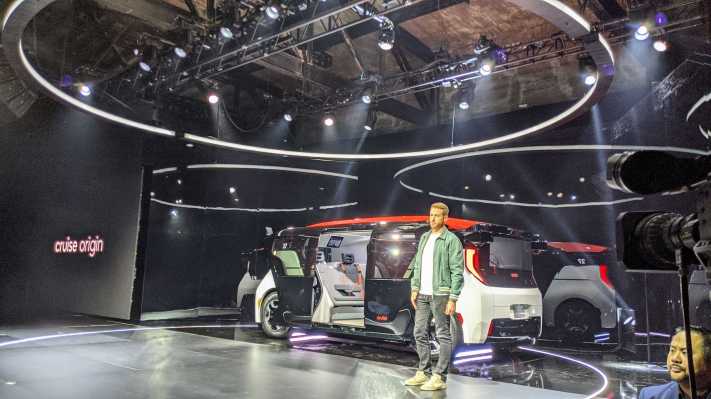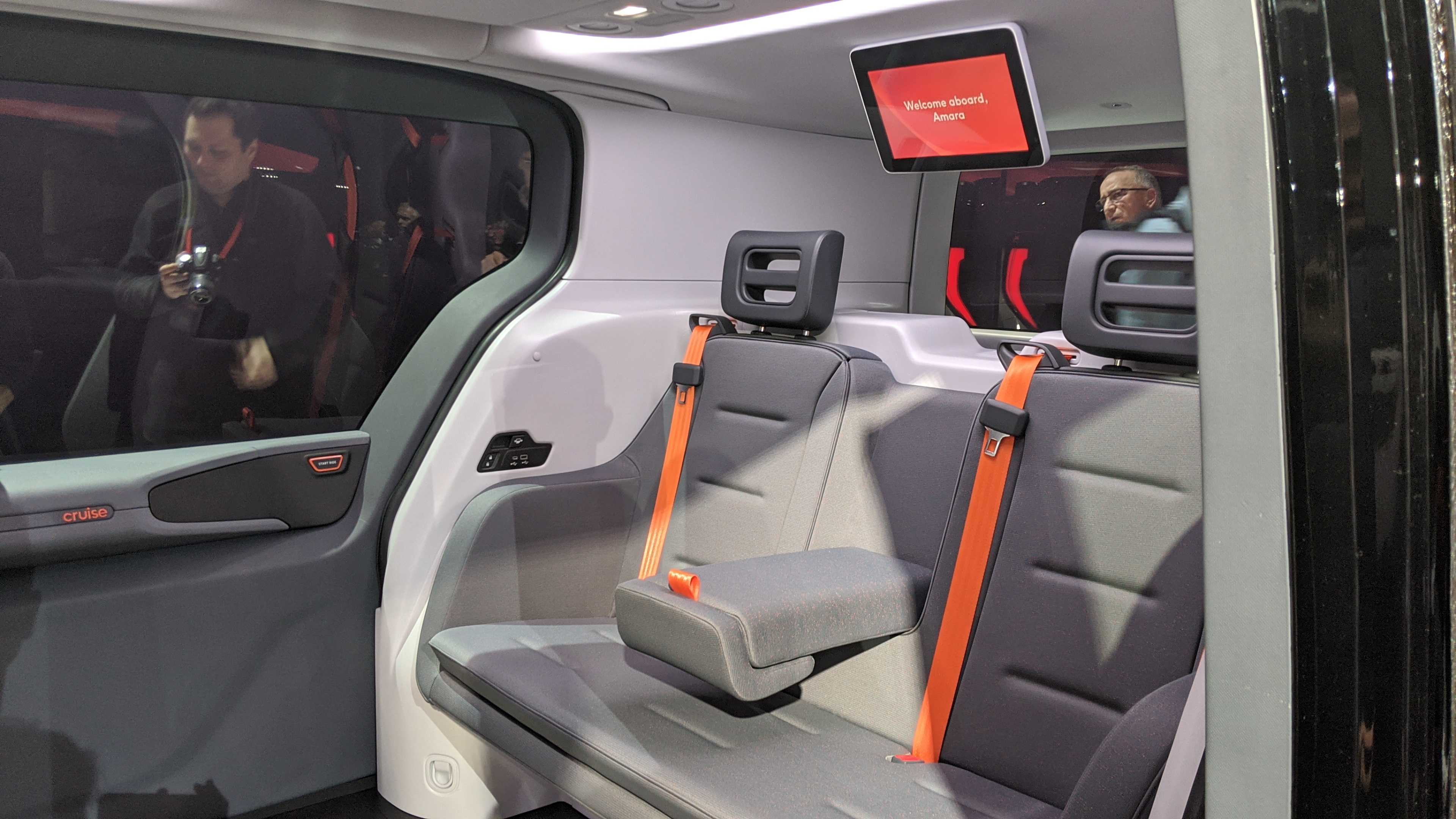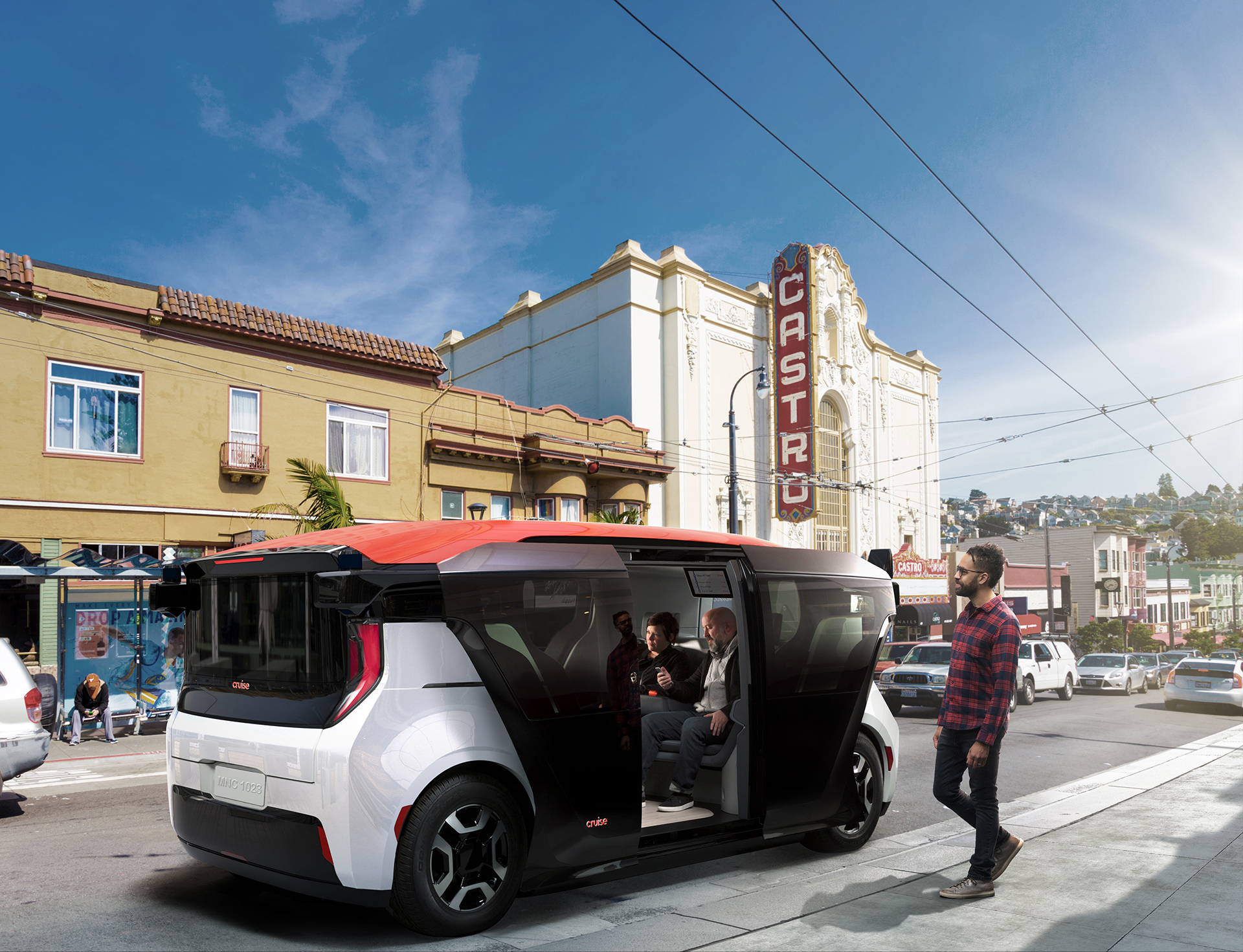

Cruise unveiled Tuesday evening a “production ready” driverless vehicle called Origin, the product of a multi-year collaboration with parent company GM and investor Honda that is designed for a ride-sharing service.
The shuttle-like vehicle — branded with Cruise’s trademark orange and black colors — has no steering wheel or pedals and is designed to travel at highway speeds. The interior is roomy with seats that face each other, similar to what a traveler might find on some trains. Each seat is meant to accommodate the needs of an individual with personal USB ports, CTO and co-founder Kyle Vogt noted during the presentation. Digital displays are located above, presumably to give travelers information about their rides.
The doors don’t hinge outward, Vogt added. Instead, he said, “they slide open, so bikers are safer.”
Splashy looks aside, the Origin is meant to show Cruise’s muscle and intent to deploy an autonomous ride-sharing service at scale. What and when and how that will happen are the important questions left unanswered.

CEO Dan Ammann stressed that the vehicle is not a concept, but instead is a production vehicle that the company intends to use for a ride-sharing service.
However, don’t expect the Origin to be on public roads anytime soon. The driverless vehicle doesn’t meet U.S. federal regulations known as FMVSS, which specify design, construction, performance and durability requirements for motor vehicles.
For now, the Origin will be used on private, closed environments such as GM facilities in Michigan or even Honda’s campus outside of the U.S, Ammann said in an interview after the presentation.

Cruise unveiled Tuesday Origin, a driverless shuttle designed for ride-sharing.
Ammann also emphasized the low cost of the vehicle, which he added is designed to operate 1 million miles.
“We’ve been just as obsessed with making the Origin experience as inexpensive as possible,” Ammann said while on stage. “Because if we’re really serious about improving life, and our cities, we need huge numbers of people to use the Cruise origin. And that won’t happen unless we deliver on a very simple proposition, a better experience at a lower price than what you pay to get around today.”
GM will manufacture the vehicle, although Ammann wouldn’t provide more details on where except to say “you’ll find out in a couple of days.” He did say that the vehicle will be produced “for roughly half the cost of what a conventional electric SUV costs today.”
The reveal offered more clues about Cruise’s hardware development, which has been growing in the past 18 months under the leadership of its vice president of hardware Carl Jenkins and Brendan Hermalyn, director of autonomous hardware systems.
The vehicle is outfitted with what Vogt called an “owl,” a hybrid sensor assembly that seems to combine camera and radar.
Still, there remains a number of questions from when and where the Origin will deploy to what Ammann means by manufacture at “scale,” and what rides will cost.

